MoCP at 40
January 28 – April 10, 2016
Museum of Contemporary Photography
Columbia College Chicago
600 South Michigan
Chicago, Illinois 60605
I experienced a slight state of Stendhal syndrome upon viewing the MoCP’s exhibition inaugurating its fortieth anniversary. Having worked at the museum while studying at Columbia College Chicago in the mid-1990s, I was reminded of how that experience still resonates in candid (and regularly challenging) conversations with the faculty in the Department of Photography that began then. This salon-styled exhibition is comprehensive, curiously organized, impressive and worth multiple looks. Since the exhibition opened, I have returned twice and look forward to sharing the experience with my students very soon.
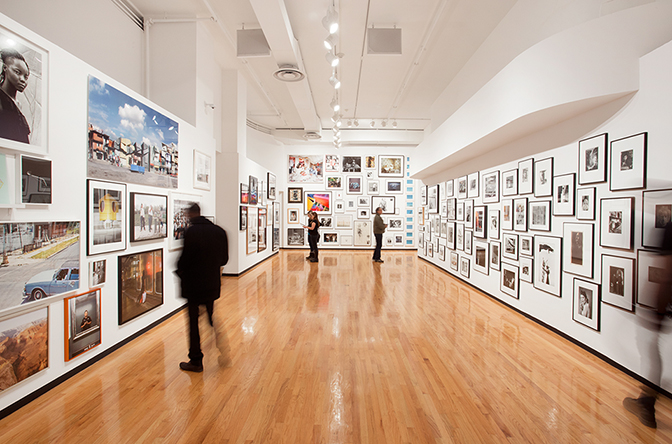
MoCP at 40, Museum of Contemporary Photography, Chicago, Illinois, 2016
The MoCP has evolved into a timely, globally aware institution. This can be seen clearly in this display. The exhibition is immense, covering all three floors of the museum. There are numerous works by recognized seminal practitioners (Diane Arbus, Roy DeCarava, Robert Frank, Sally Mann, Gordon Parks, and Andy Warhol) coupled with equally important local photographers (Dawoud Bey, Paul D’Amato, Jennifer Greenburg, Bob Thall, and Jan Tichy) that set out some of the parameters of the museum’s collection. Simply put, this exhibition offers an interesting and informative overview of the history of the medium as it applies to our city and beyond.
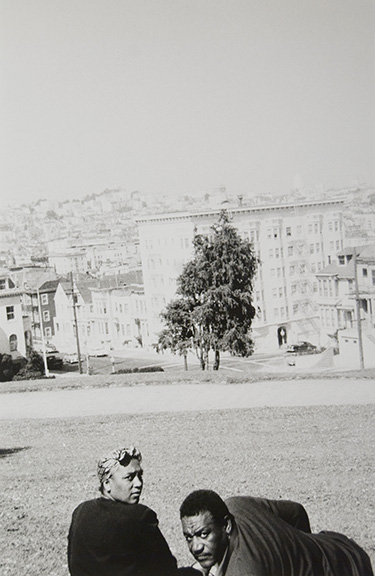
Robert Frank, San Francisco, 1956
The MoCP has been a good steward in supporting midwestern photographers since its inception. This can be seen in the site-specific installation created by Chicago artist Aimée Beaubien. Her temporary piece is a delightful and spirited three-dimensional cacophony of color, form and shape. This photo-based sculptural artwork is one of the highlights of the exhibition. Beaubien’s effort reminds one of the importance of the Midwest Photographers Project, initiated in 1982, and this installation carries that legacy into the present.
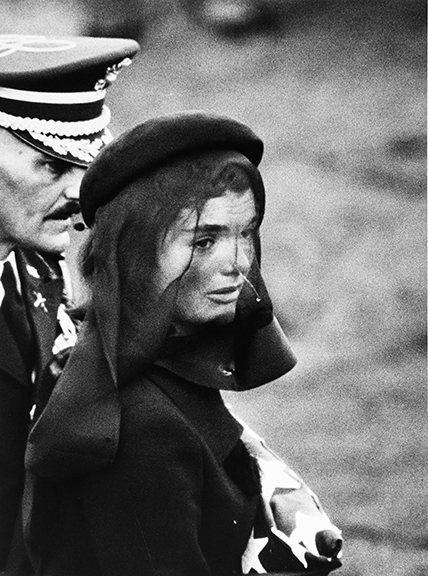
Elliott Erwitt, Jackie Kennedy at Funeral, 1963, portfolio 1980
The exhibit includes some of the key political and personal images that have become icons in our visual culture. In Elliott Erwitt’s Jackie Kennedy at Funeral, 1963, one can feel the agony and pain that defined this pivotal event in American history. In Jonathan Jone’s article “Beyond the veil: photographs can be more powerful than art” for The Guardian, 2/5/15, he writes of the power of this image, “Yet what makes the picture extraordinary is what Erwitt sees through the veil. He captures the expression on Jackie Kennedy’s face with harrowing precision. Her features are scrunched up, her facial muscles collapsing in grief. Her eyes tell a story of unbelievable sorrow. Her mouth is a broken harp of sheer despair.” Jone’s assessment is succinct, honest, and heartfelt. Erwitt’s image is simply timeless, embedded in our cultural milieu, and its full force can still be felt here.
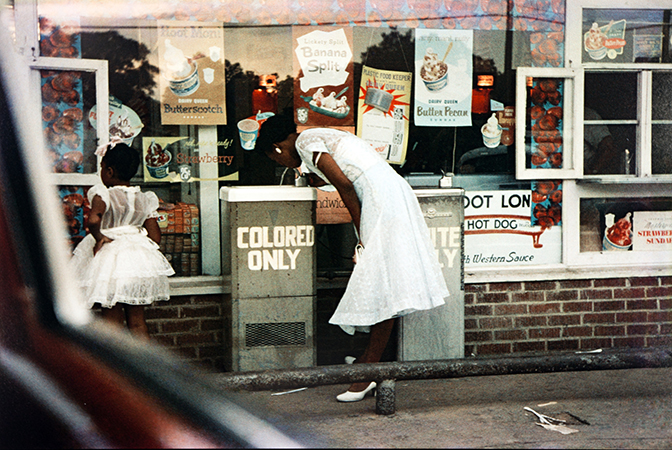
Gordon Parks, Drinking Fountains, Mobile, Alabama, 1956
One could argue that there is just to much on the walls. Yes, there is little opportunity to take pause and reflect, yet the overwhelming number of quality photographs is a strength that comments upon the manner in which we presently digest all images, all the time. And, in this age of exhibits curated to a specific issue (cause, race, religion, sexual orientation, theme, etc.), the diverse spectrum of materials presented side-by-side here is refreshing. One can encounter Gordon Park’s Drinking Fountains, Mobile, Alabama, 1956 and within steps be viewing Diane Arbus’s Two Girls in Matching Bathing Suits, Coney Island, N.Y., 1967. This seemingly scattershot style of arrangement tends to reflect a more inclusive platform for the audience, rather than the rigid opaqueness seen in so many recent exhibitions devoted to the medium.
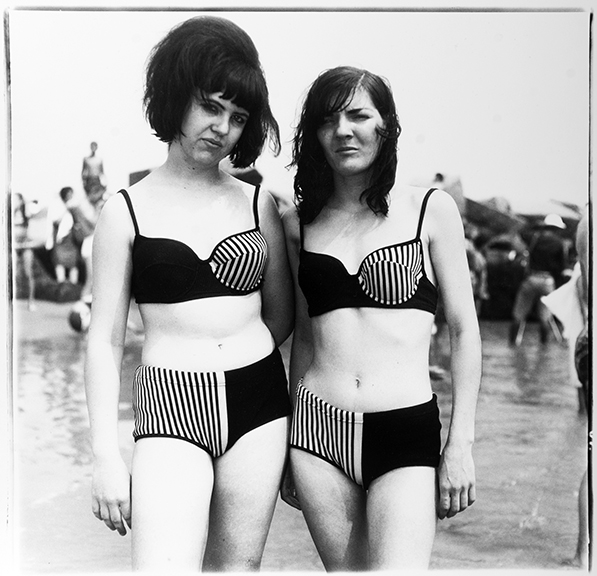
Diane Arbus, Two Girls in Matching Bathing Suits, Coney Island, N.Y., 1967
The MoCP has expanded and matured greatly since my time spent searching out obscure treasures in the collection’s vault. And, in the 40 years since the MoCP’s inception, the museum has regularly addressed and posed relevant comment and question focused upon innovative aspects of the medium, the various genres, topical cultural issues, and a flurry of other intriguing material. One item that piques my interest at present is the question, “How long can a museum be considered contemporary?”. This is a rather broad question that will need to be addressed at a later time. This subject will most certainly come into focus at some point through analysis of future exhibition. Nevertheless, the exhibit, MoCP at 40, sets the foundation to address such lofty inquiry. Through continued quality stewardship, provocative exhibitions, and an agile ability to stay current, the MoCP is posed to offer productive insight into the medium for another 40 years.
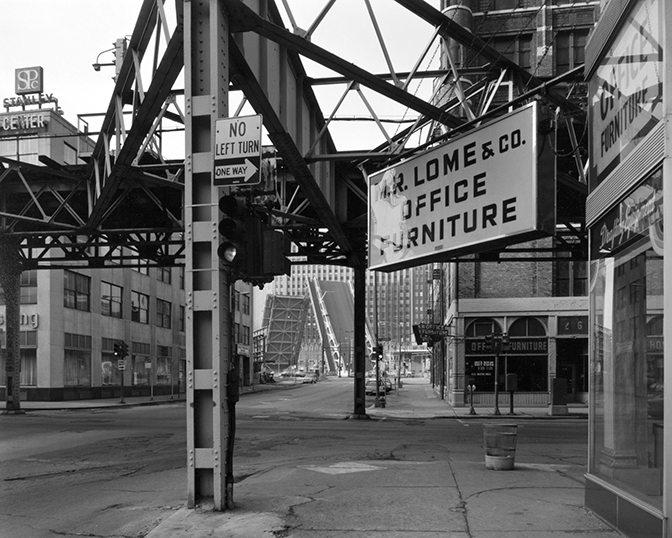
Bob Thall, Chicago (Lake and Franklin Street), 1979
Here’s a sampling of the MoCP’s spring programming:
2/25/16 – Lecture in Photography: Zanele Muholi
3/4/16 – Symposium: The Unstable Image
3/16/16 – Lecture in Photography: Mark Sealy
4/5/16 – Lecture in Photography: Nadav Kander
For event details, please visit: http://www.mocp.org/events/
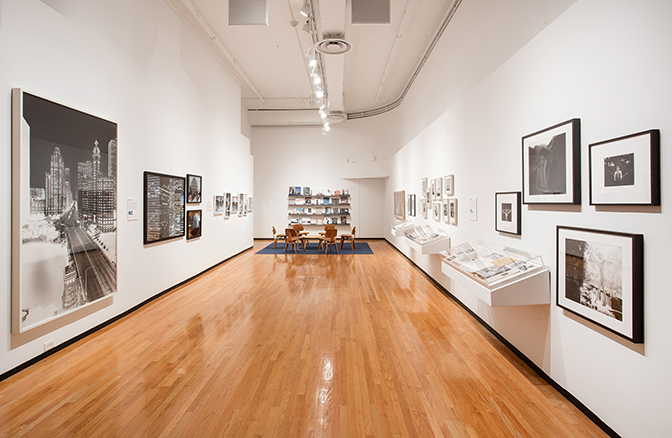
MoCP at 40, Museum of Contemporary Photography, Chicago, Illinois, 2016
For additional information, please visit:
MoCP: Museum of Contemporary Photography – http://www.mocp.org/
Darkroom 2016 – http://www.mocp.org/events/event?id=584691
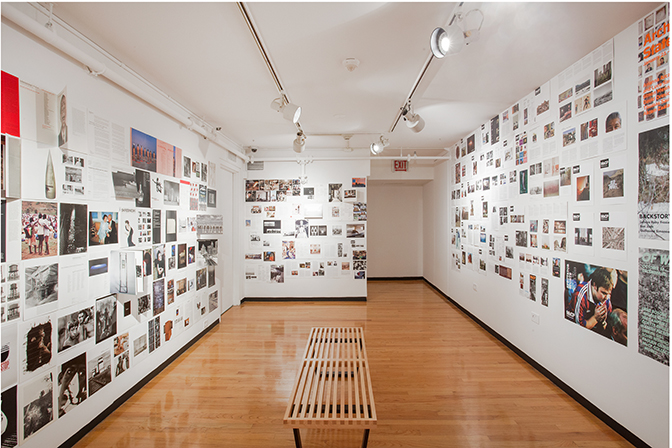
MoCP at 40, Museum of Contemporary Photography, Chicago, Illinois, 2016
All images courtesy of MoCP, Museum of Contemporary Photography, Chicago.
Review by Chester Alamo-Costello


